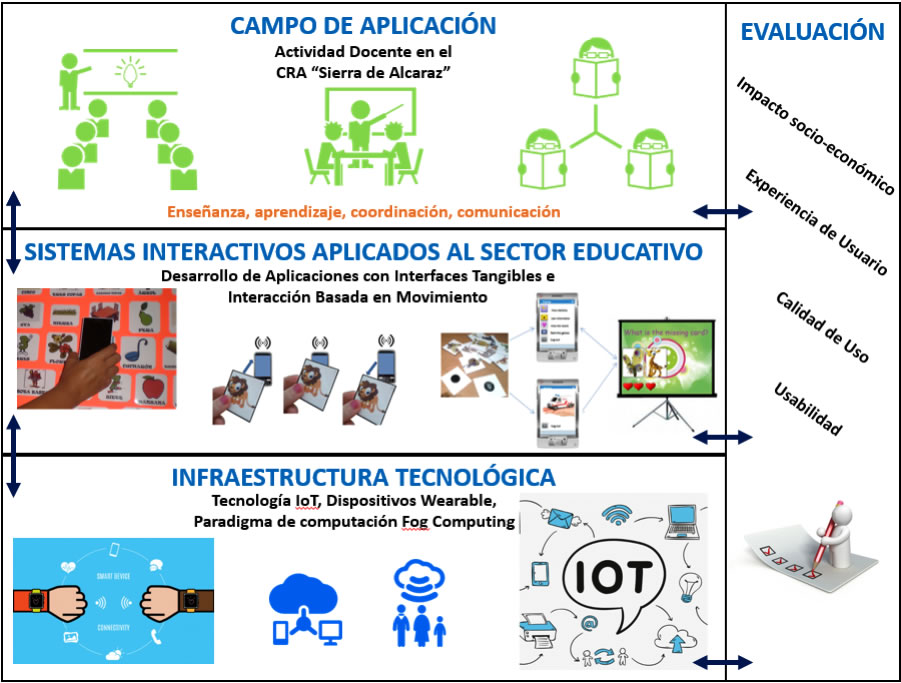The project is proposed with a double purpose. First, with the aim of advancing scientific and technical knowledge in the research field internationally known as TEL (Technology-Enhanced Learning). In this sense, we intend to deepen research lines such as the new Internet of Things (IoT) technologies and wearable devices applied to the field of education, development of interactive systems with novel interaction mechanisms based on distributed and tangible user interfaces, movement-based interaction and finally, the application of Fog Computing (evolution of Cloud Computing) as a platform for the processing and storage of the information generated.
The second purpose of the project will be to apply this knowledge in the educational field of one of the Gathered Rural Schools (CRA) existing in Castilla-La Mancha, specifically in the CRA called “Sierra de Alcaraz” located in the province of Albacete and composed of 5 sections located in Jardín, Peñascosa, Povedilla, Viveros and Robledo.
“The applications to be developed will allow teachers to have at their disposal novel systems to create teaching resources that allow the application of new educational methodologies based on activities.”
“In addition, this software applications will make it possible to support teaching activities within the framework of the CRA, both for the teachers’ coordination and for the active participation of parents and students, emphasizing interaction and communication among all educational agents.

The evaluations that will be carried out cover several areas, since not only an evaluation of the applications from the operational point of view is contemplated, but an initial evaluation of the socio-economic impact in that region of Castilla-La Mancha, declared as an ITI zone, is also considered.
Finally, among the results of the project we may expect to obtain advances in:
- IoT technology and wearable devices applied in educational environments;
- the Fog Computing paradigm, as an information management platform;
- the field of movement-based interaction and tangible user interfaces;
- the generation and evaluation of prototypes to improve teaching activities, and finally,
- advances in the field of evaluation methods of the quality of use and user experience in educational environments enriched with technology.
